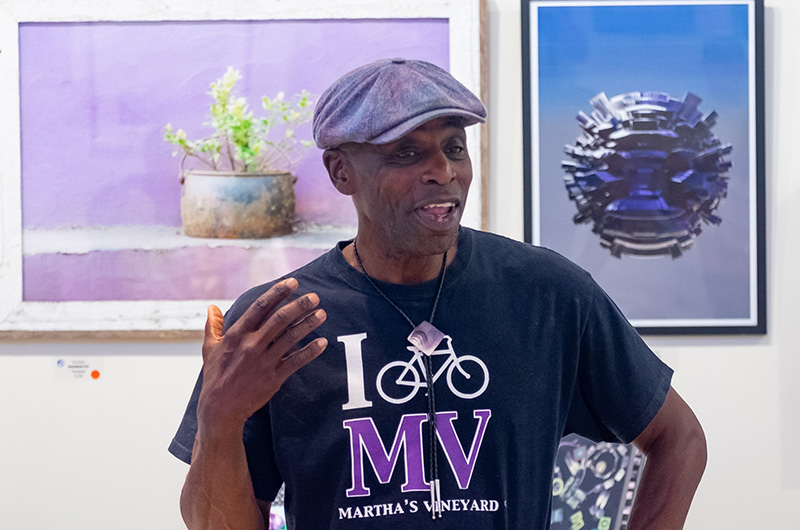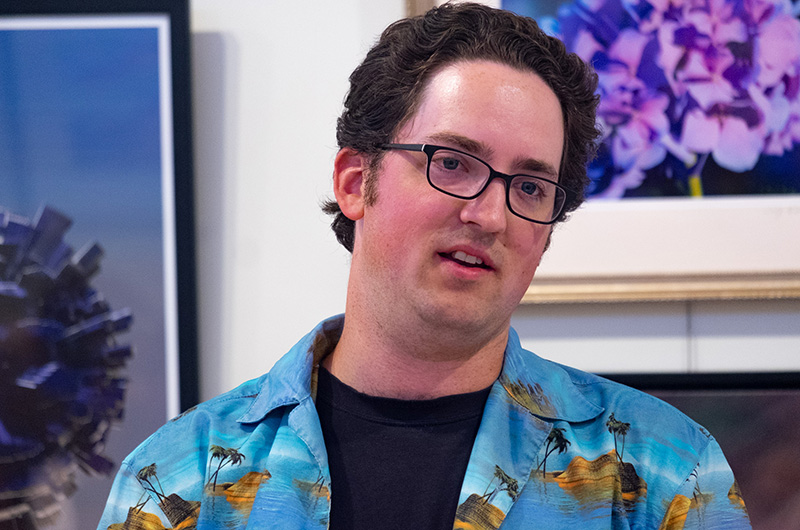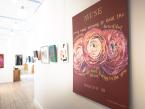There are over 30 Stonehenge replicas in the contiguous United States. These include phone-henges, car-henges, laser-cut henges, astronomically-aligned henges, and Twinkie-henges. Ray Ewing has photographed almost all of them.
Those photographs were on display Tuesday night at Featherstone Gallery in Oak Bluffs for the first of its weekly Photographer’s Salons, organized for the past eight years by Michael Johnson. Every Tuesday, the salons will showcase the work of one Island photographer and give the artist an opportunity to talk to the community about their creations.
“I wanted to get the photographers together and start a salon,” Mr. Johnson said, “a place where photographers and lovers of photography can come together and share their work.”
Mr. Ewing, who grew up on the Vineyard, has been involved with Featherstone Gallery since his freshman year of high school.
“Ray’s very special to us,” said Featherstone executive director Ann Smith. “We remember when he was in high school and would walk through the woods to work in the dark room.”
Although the dark room is now gone, Mr. Ewing isn’t. He is an adjunct professor of photography at the College of the Desert in California, but continues to spend his summers on the Vineyard, working as a photographer for the Vineyard Gazette.
In his talk, Mr. Ewing discussed his odyssey as both a photographer and an artist. He began his career with cynical, anti-tourist photos that reflected a resentment of the place where he grew up. But for his graduate thesis, Mr. Ewing turned the table, and put himself in the tourist scenes where he felt most uncomfortable. What emerged was a new way of thinking about making images of land. He called it Fauxasis, and focused his project around islands.
Not only did he photograph islands, but he made them, too.

Mr. Ewing started small, forming sand masses in kiddie pools and taking their picture. He then used video game worlds, like Sim City, to tinker with his ideas about land.
“I could take 1,000 screenshots over a period of a month in Sim City 4,” Mr. Ewing said. He would overlay the shots, print them on silver, metallic Moab paper, and create shimmering islands straight out of the fiber optic ether.
“That was the first image that really felt like my memories of being a kid on the beach,” he said.
He then moved into the physical realm. One photo that drew a reaction from the crowd was Mr. Ewing’s image of a tidal island in Caleb Pond, Chappaquiddick.
“Not to be selfish, but I felt like it was mine because no one has ever stood on Caleb’s Island,” he said.
For Mr. Ewing, photographs of Yosemite Valley could be beautiful, but the viewer’s familiarity with the place obscures the emotion the photographer may find in it. A two-week-old tidal island doesn’t carry quite the same baggage.
One audience member asked Mr. Ewing if he ever felt that he’d become the tourist character he played in his graduate thesis. Mr. Ewing has road-tripped across the country 11 times, and, in his words, “keeps getting seduced to the dark side by casinos, roadside attractions, and ancient site replicas.”
That’s why he can’t get enough of the country’s pyramids, Parthenons, castles and, of course, Stonehenges. Mr. Ewing hasn’t become the tourist from his graduate thesis; he’s become a parody of that tourist.
“I’m gonna make a AAA guide to see all the wonders of the world without leaving the interstate,” Mr. Ewing asserted.
Judging by his portfolio, the book is already in the works.
Jeremy Driesen will discuss his work at the next Photography Salon at Featherstone Center for the Arts on Tuesday, July 17 at 7 p.m.







Comments
Comment policy »